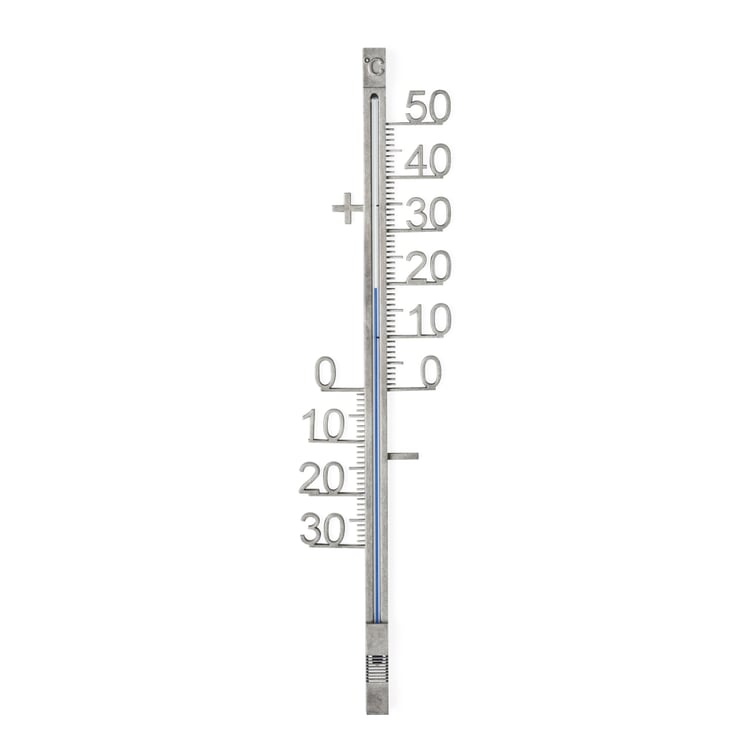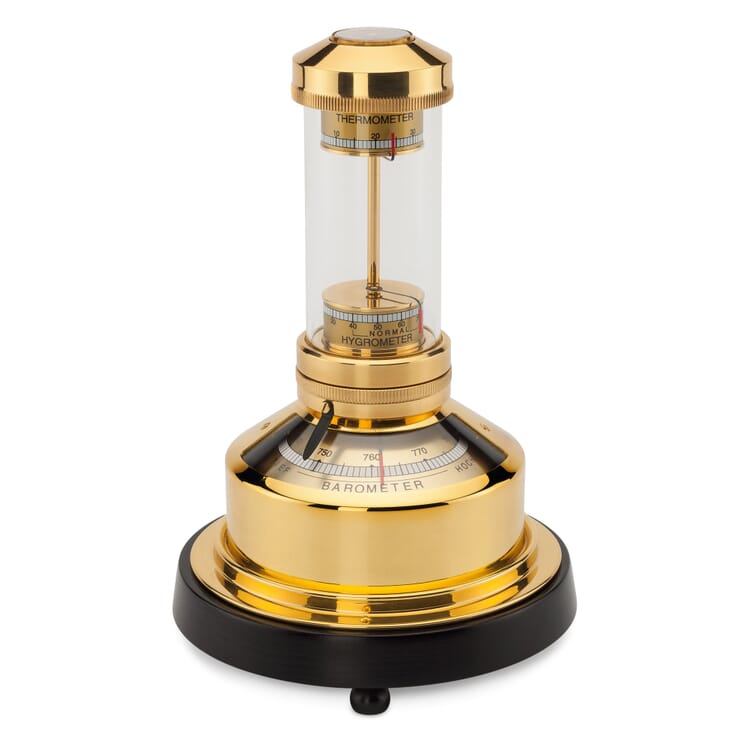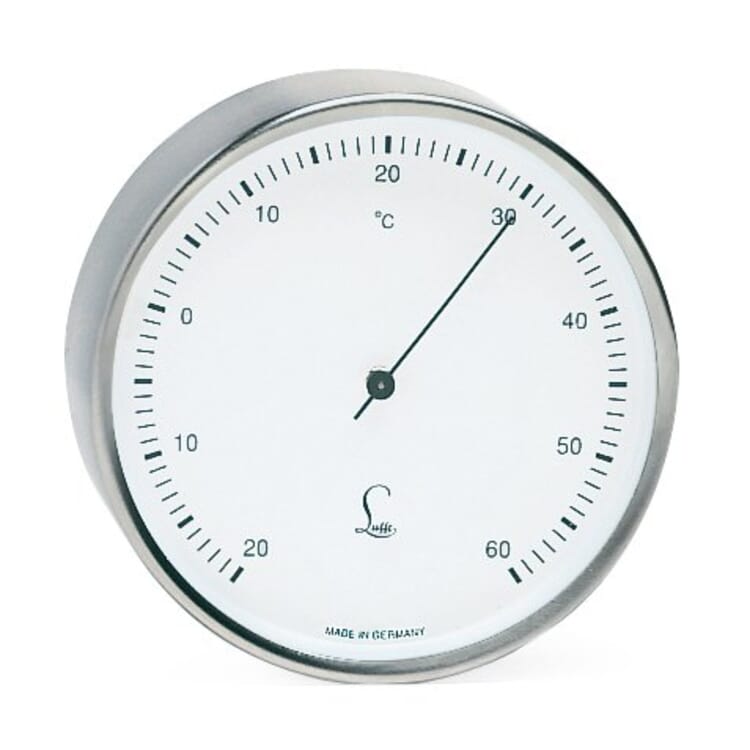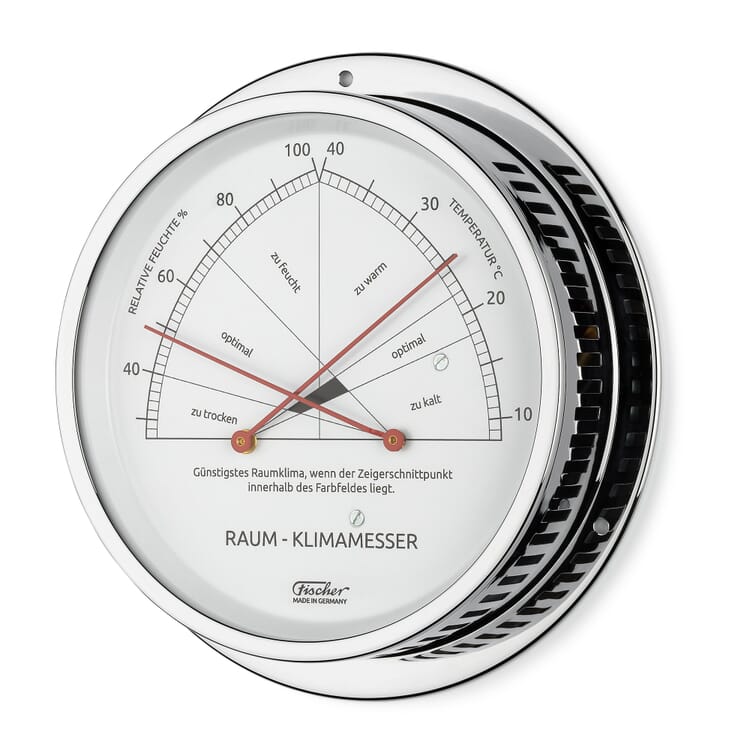Outdoor thermometer. Make good weather
The human body is unsuitable for exact temperature determination. It is enough to notice that you like to feel cold yourself while the next person is tearing off their clothes - which is why this is also referred to as the perceived temperature. Outdoor thermometers, on the other hand, are more objective and, when installed correctly, provide reliable information about the actual temperature values. Whether as a weather station or a stand-alone temperature measuring device: our outdoor thermometers made of stainless steel, enamel, aluminum or die-cast zinc help when the internal climate observation reaches its limits.
Getting warm together. The operation of outdoor thermometers
Everyone uses them, but hardly anyone knows exactly how they actually work: Thermometers. Or in this case, more precisely: outdoor thermometers. The principle behind temperature measurement is actually quite simple: the principle of thermodynamic equilibrium. If two bodies that come into contact with each other have a different temperature, they will equalize over time. Anyone who has ever warmed their cold feet on the person next to them in bed knows the principle from their own experience. Mechanical thermometers, such as those in the Manufactum range, make use of the thermal expansion of materials. In short, this means that almost all substances - be they gaseous, liquid or solid - expand or contract depending on the temperature, which is related to an increased or decreased vibration of the atoms. Two different methods of temperature measurement work with this: the liquid thermometer on the one hand, and the bimetallic thermometer on the other.
Do not leave(s) cold. The expansion thermometers
Liquid thermometers correspond to the archetype of an outdoor thermometer: a small glass bulb with a very fine, elongated cavity inside - the so-called capillary - filled with thermometer liquid, and an adjacent scale. An outdoor thermometer usually contains a colored alcohol, which has a much lower freezing point than water and, unlike mercury, which is no longer permitted today, is non-toxic if the device ever breaks. If the outside temperature rises, this is transferred to the liquid, which then expands and rises in the tube. Conversely, the level drops when it gets colder. Bimetallic thermometers, on the other hand, consist of a spiral strip of two different metals joined together, at the end of which is a pointer pointing to a scale. When the temperature changes, the two metals expand to different degrees, causing the strip to bend. The strength of the curvature, in turn, influences the position of the pointer and thus the temperature reading.
Keep a cool head. Attach outdoor thermometer
The accuracy of measurement and the place of installation of an outdoor thermometer are directly related. It will be difficult to find an optimal position. The task is rather to determine the best possible place. The following applies: the outdoor thermometer should be protected from the sun and rain, but at the same time, if possible, not too close to the wall of the house to minimize the influence of heat radiation. Because pushed into the corner, possibly still directly shone by the sun, definitely no outdoor thermometer remains cold. In the heat of the moment, the measured temperatures can deviate by several degrees from the actual values. And then you might as well stick your own head outside the door and trust in the inaccuracy of your sensory perceptions. Ideally, you should therefore install an outdoor thermometer on the north or (north) east side of a building. There it is most likely to be protected from strong weather influences, which considerably extends its service life, even if it is made of such high-quality materials as, for example, our stainless steel outdoor thermometers and weather stations. In many cases, the window reveal is also a suitable place for installation. Specially made for this purpose are the window thermometers in our range, which can also be read conveniently from the inside. "All weather!" is all you can say.











